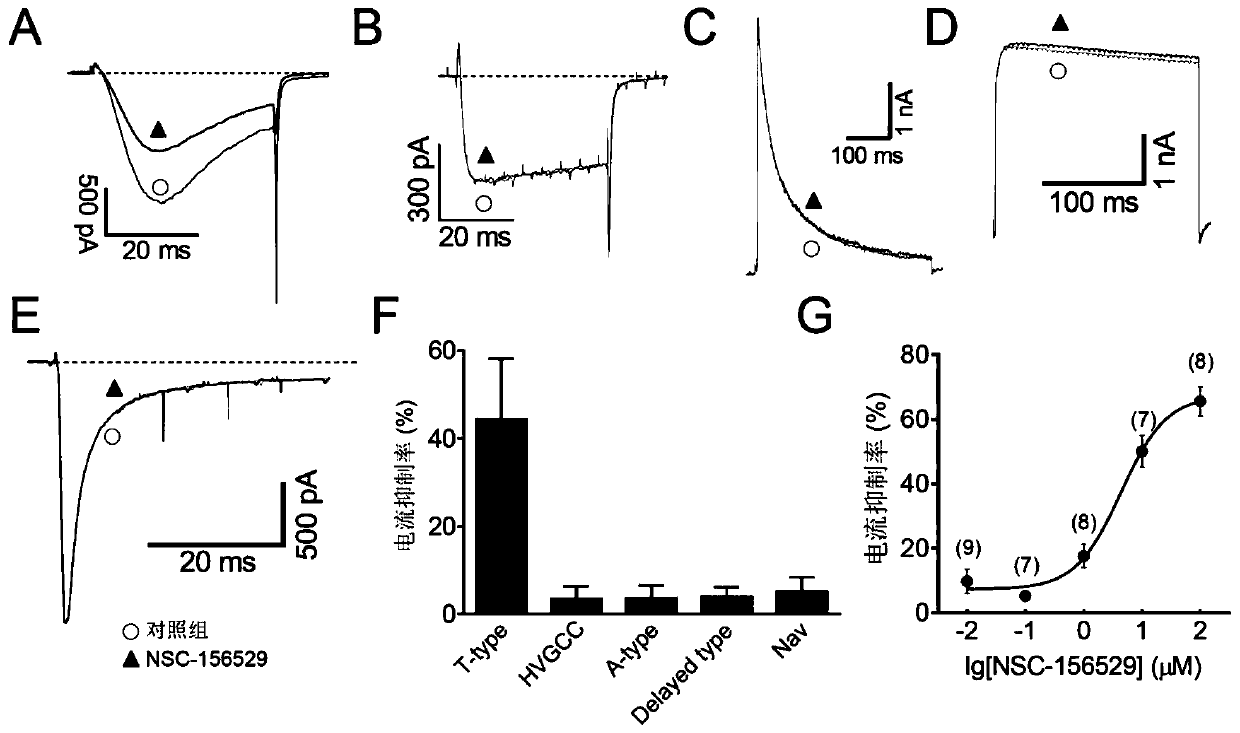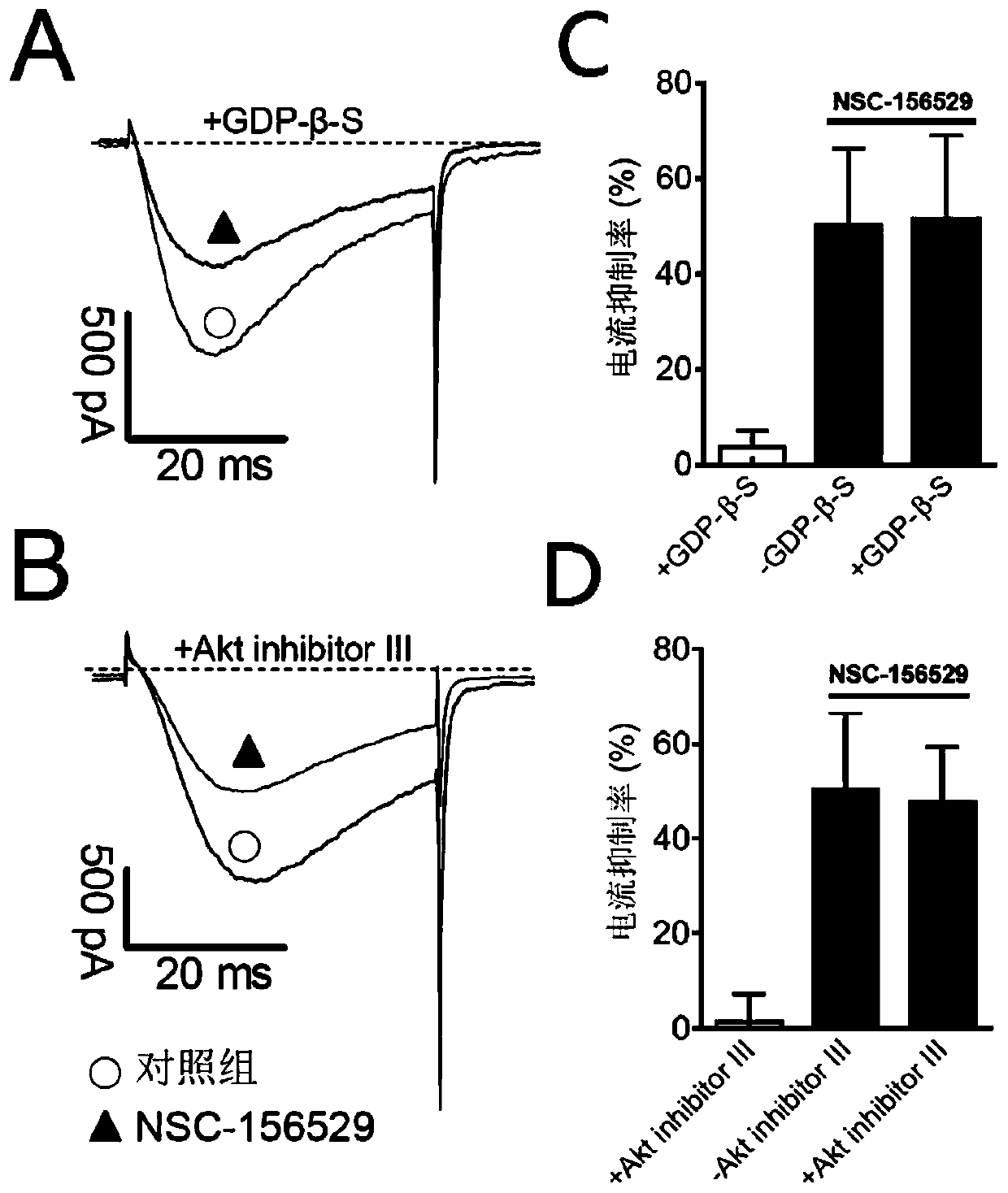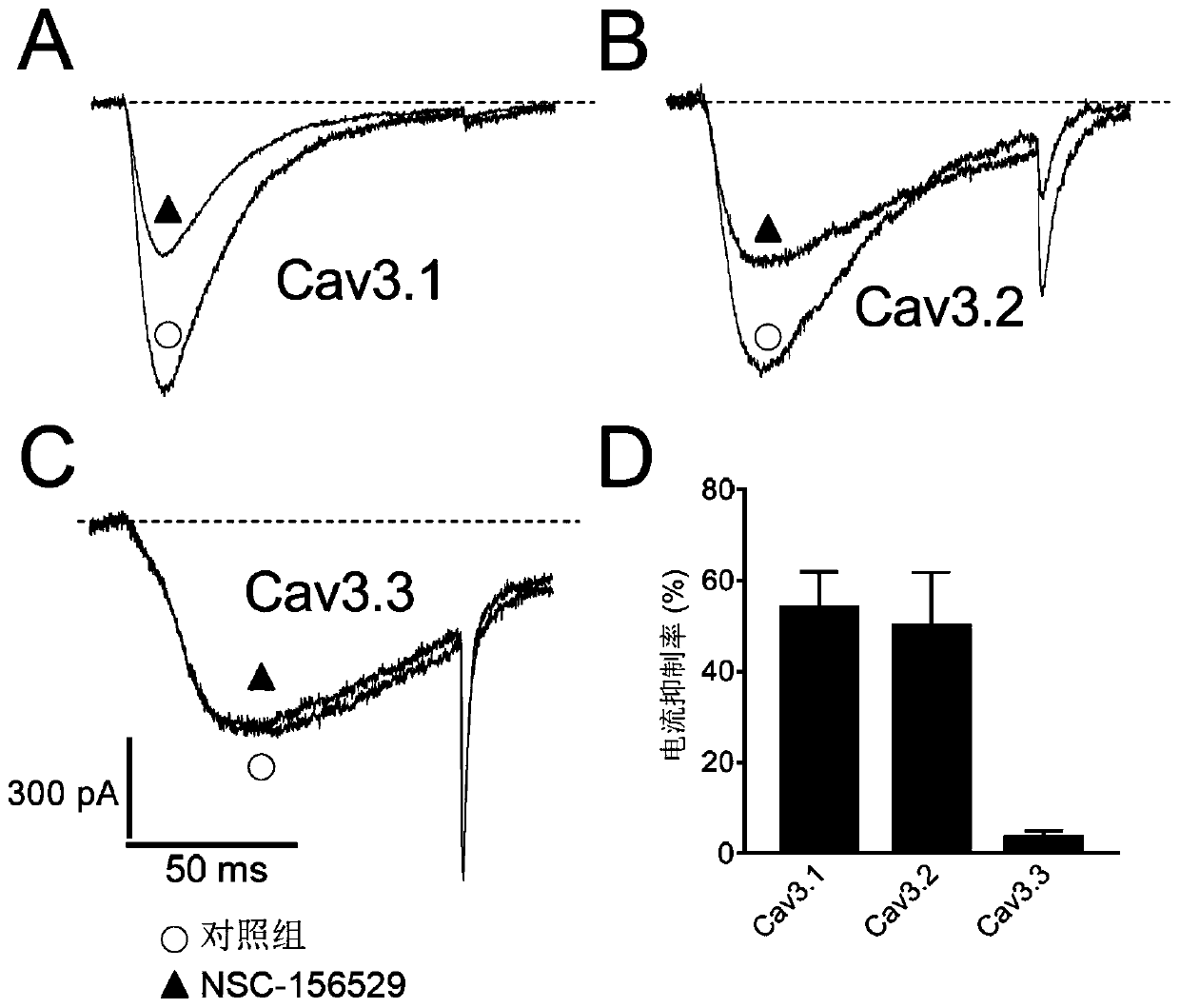Application of NSC-156529 as T-type calcium channel antagonist
A calcium channel antagonist and calcium channel technology, applied in the field of NSC-156529 as a T-type calcium channel antagonist, can solve the problems of unrevealed and undisclosed analgesic effects of NSC-156529 compounds
- Summary
- Abstract
- Description
- Claims
- Application Information
AI Technical Summary
Problems solved by technology
Method used
Image
Examples
Embodiment 1
[0029] Example 1: NSC-156529 can dose-dependently inhibit T-type calcium channel current in TG neurons
[0030] In this embodiment, the selected experimental materials are as follows:
[0031] ICR mice (18-22g) were provided by the Animal Center of Soochow University, animal certificate number: SYXK (Su) 2007-0035. NSC-156529 and electrophysiological reagents were purchased from Sigma.
[0032] The specific experimental plan is as follows:
[0033] Bilateral trigeminal ganglion (TG) of mice was collected by microsurgery, TG neurons were isolated acutely by enzymatic digestion, and the T-type calcium channel currents of small-diameter TG neurons were recorded by whole-cell patch clamp, and each group recorded 7- 9 cells.
[0034] When recording the T-type calcium channel current, the cell was clamped at -110mV, stimulated with a square wave to -40mV, and the stimulation time course was 40ms. The inner liquid of the recording electrode is: 110mM CsCl, 4mM MgATP, 0.3mM Na 2 ...
Embodiment 2
[0039] Example 2: NSC-156529 inhibits T-type calcium channel current independent of G protein and does not pass through the PKB / Akt pathway In this example, the selected experimental materials are as follows:
[0040] The G protein blocker GDP-β-S and the Akt kinase inhibitor Akt inhibitor III used in the experiment were purchased from Sigma, USA.
[0041] The specific experimental plan is as follows:
[0042] The method of acute cell separation is the same as above, the method of whole-cell patch clamp recording of T-type calcium channels and the components of the internal and external fluid of the electrodes are as described above. GDP-β-S and Akt inhibitor III block the signaling pathways mediated by G-protein and PDK1 / Akt, respectively, to detect whether NSC-156529 inhibits T-type calcium channels through the above pathways. Such as figure 2 As shown in A, 2C and 2B, 2D, the G-protein inhibitor GDP-β-S (1mM, figure 2 A, 2C) and Akt inhibitor III (10μM, figure 2 B, 2...
Embodiment 3
[0043] Example 3: NSC-156529 inhibits T-type calcium channel Cav3.1 and Cav3.2 subtypes, but has no effect on Cav3.3
[0044] In this embodiment, the selected experimental materials are as follows:
[0045] HEK293 cells were purchased from ATCC, USA; NSC-156529, transfection reagents and electrophysiological reagents were all purchased from Sigma.
[0046] The specific experimental plan is as follows:
[0047] Take a bottle of cultured cells, discard the culture medium, add 3ml of phosphate buffer saline to wash lightly twice, add about 1ml of 0.25% trypsin to digest, add DMEM culture medium after about 3-5 minutes, blow and beat, collect cells and centrifuge (1000 Turn / min) for 5 minutes, discard the supernatant, add about 5-10ml DMEM culture medium to suspend the cells. After slow blowing, passage to a 35mm petri dish covered with glass slides, and transfect after 24 hours. The classic calcium phosphate transfection method was used for cell transfection (transfection of C...
PUM
 Login to View More
Login to View More Abstract
Description
Claims
Application Information
 Login to View More
Login to View More - R&D
- Intellectual Property
- Life Sciences
- Materials
- Tech Scout
- Unparalleled Data Quality
- Higher Quality Content
- 60% Fewer Hallucinations
Browse by: Latest US Patents, China's latest patents, Technical Efficacy Thesaurus, Application Domain, Technology Topic, Popular Technical Reports.
© 2025 PatSnap. All rights reserved.Legal|Privacy policy|Modern Slavery Act Transparency Statement|Sitemap|About US| Contact US: help@patsnap.com



